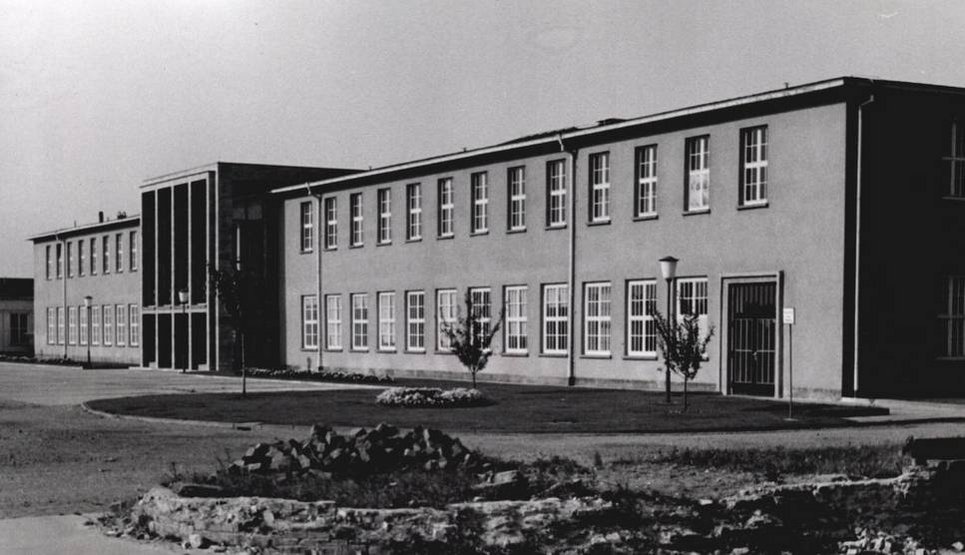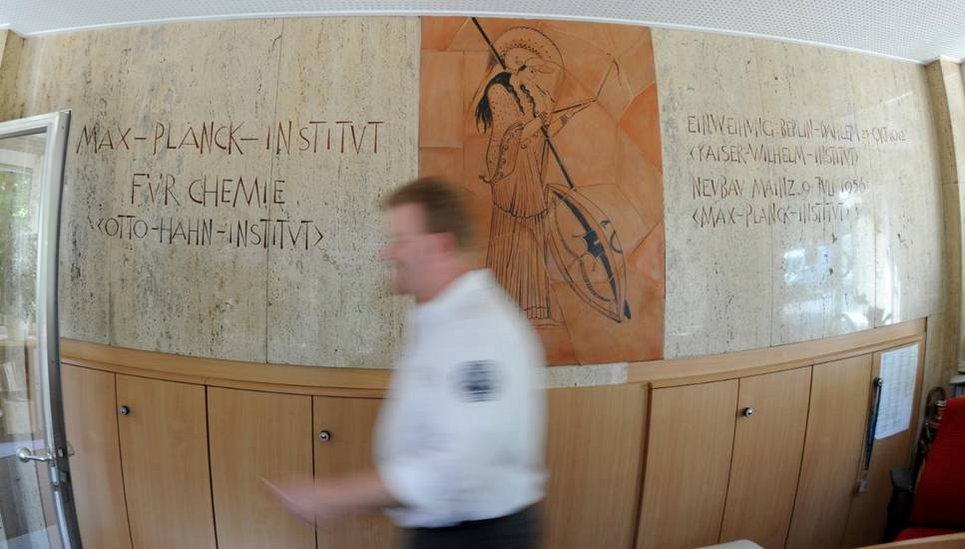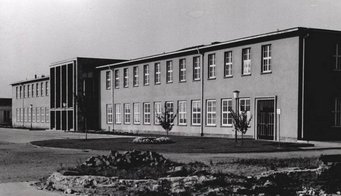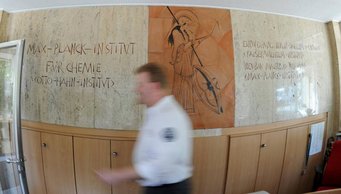A New Start in Mainz
Station 4

In 1946 work started on setting up a new in-stitute on the grounds of the former anti-air-craft barracks in Mainz-Bretzenheim, right next to the site where a university was also beginning to take shape. The existing buildings were repaired and renovated under the leadership of Fritz Straßmann. Some new buildings were erected, but it was not until 1949 that the work had progressed far enough for the move from Tailfingen to Mainz to go ahead.
In the meantime (1948), the Max Planck Society (MPG) emerged from the Kaiser Wilhelm Society in the American and British occupation zone with Otto Hahn as its first president. The former Kaiser Wilhelm institutes, located in the French zone (including the Mainz Institute) became affiliated with the MPG and were renamed accordingly in 1949. The Mainz Max Planck Institute for Chemistry was formed with 53 members of staff.
The official inauguration of the Institute took place on 9 July 1956 after several more years of building work. In 1959 the Institute was given an additional name: ‘The Otto-Hahn Institute’. In 1961, a new building was added for the Nuclear Physics Department, only to be replaced by a larger building in 1985 (Department of Atmospheric Chemistry).
The Peaceful Goddess of War
Exhibit 4: Board in the library of the new building

For the inauguration of the Max Planck Institute for Chemistry in 1956, Institute Director Friedrich Paneth had a plaque made for the entrance of the main building in Mainz. In the middle, it shows the goddess Minerva/Pallas Athene, who has laid down her spear and shield and is holding a stylus and tablet in her hand. Is this a reference to peaceful scientific research?
Later, plaques were added to the sides with the “main information” about the Institute: the names and dates of inauguration for Berlin and Mainz.
The Greek goddess Pallas Athene corresponds to the Roman goddess Minerva, who had already served as the emblem of the Kaiser Wilhelm Society. She has remained in the logo of the Max Planck Society to this day. Minerva/Athene was considered the goddess of wisdom, worshiped as the protector of craftsmen, poets and teachers. She was also considered the goddess of tactical warfare and combat.
The figure of Minerva/Athene is a variation of an early classical necked amphora. It was fired on individual clay plates using the ancient vase-painting technique of the Mainz artist Adam Winter. The sculptor and ceramicist used iron oxides for the color black.

